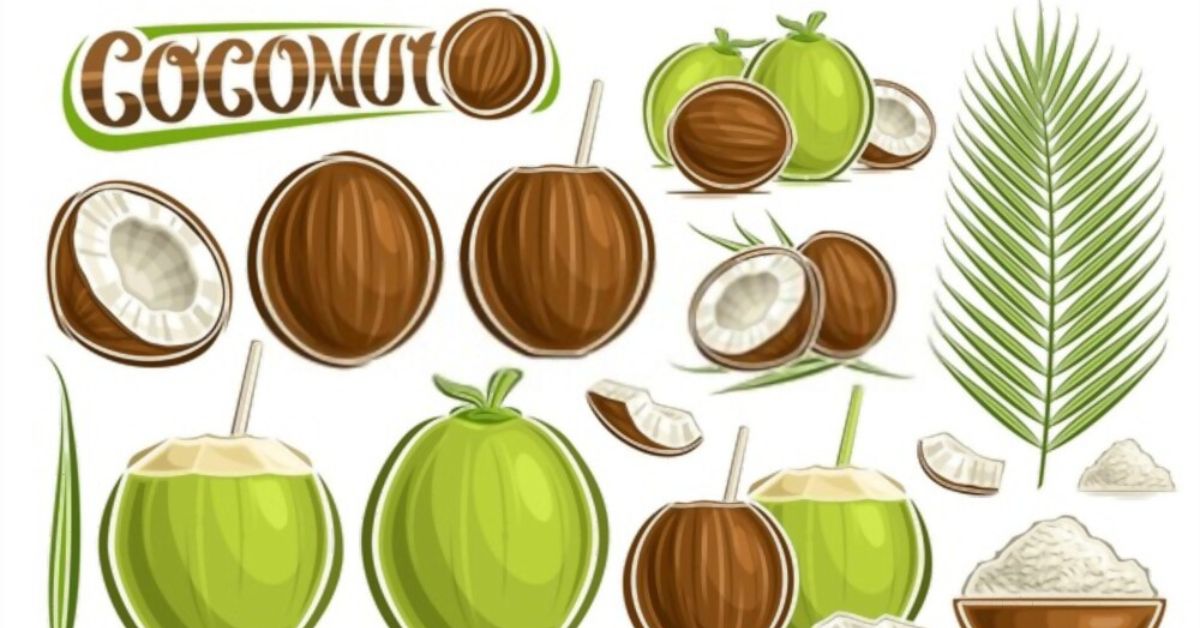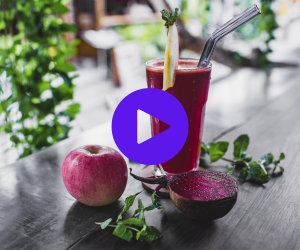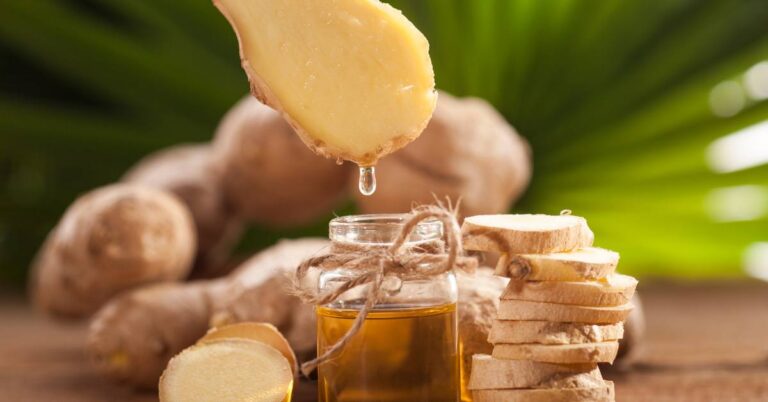Brown and Green Coconuts: Nutrition, Benefits, and Uses

Coconuts are tropical fruits known for their versatile uses, delicious flavour, and numerous health benefits. When it comes to coconuts, you may have encountered two common types: brown coconuts and green coconuts.
While they share similarities, they also possess distinct characteristics that set them apart. This article will explore the differences between brown and green coconuts. We’ll look at their appearance, taste, nutritional composition, culinary applications, medicinal properties, availability, and more.
Introduction
Coconuts are widely cherished for their refreshing water, creamy flesh, and nutritious properties. They grow on palm trees and are a staple in many tropical regions. The differences between brown and green coconuts arise from their varying stages of maturity. Brown coconuts are the mature form of the fruit, while green coconuts are younger and harvested at an earlier stage.
What Are Brown and Green Coconuts?
Brown coconuts, also known as mature coconuts, are fully ripened fruits with a hard, brown outer shell. They have a thick, fibrous husk surrounding the inner shell, protecting the sweet and creamy flesh within.
Green coconuts, on the other hand, are the younger, less mature coconuts. They have a green outer shell that gradually turns brown as they mature. Green coconuts have a thinner husk and contain more water than meat.
Differences in Appearance
The most noticeable difference between brown and green coconuts lies in their appearance. Brown coconuts have a rugged, brown husk that is relatively hard to break. In contrast, green coconuts have a smoother, green outer shell that is softer and easier to open.
Brown coconuts mature over time. Their husk darkens and hardens as they age. This makes them more suitable for different purposes. For example, they can be used to extract coconut oil or the flesh can be used in various dishes.
Variations in Taste and Texture
When it comes to taste and texture, brown and green coconuts offer distinct experiences. Brown coconuts have a richer, nuttier flavor and thicker, more substantial flesh.
The flesh is firm and can be grated or shredded for culinary purposes. Green coconuts, on the other hand, have a milder taste and a softer, jelly-like flesh. The water inside green coconuts is more abundant and has a slightly sweet and refreshing taste.
Nutritional Comparison
Both brown and green coconuts offer valuable nutritional benefits. Brown coconuts are higher in fat content and contain more calories due to their mature state. They are an excellent source of healthy fats, fiber, and essential minerals such as potassium, manganese, and copper.
Green coconuts are healthier than other options. They are lower in fat and calories, but higher in electrolytes. This makes them a great choice for hydration.
Culinary Uses
Brown and green coconuts find their place in various culinary applications. Brown coconuts are frequently used to make coconut milk and oil.
These ingredients add flavor and richness to curries, desserts, and baked goods. The meat of the coconut can be grated and used as an ingredient in various dishes, including shrimp, cakes, and soups. Green coconuts are popular for their refreshing water, often consumed as a standalone beverage or incorporated into smoothies, juices, and cocktails.
Medicinal Properties
Coconuts, regardless of their maturity, offer numerous health benefits. Brown coconuts are particularly rich in medium-chain triglycerides (MCTs), which are beneficial for brain function, weight management, and heart health. The high electrolyte content of green coconuts makes them an ideal choice for rehydration and replenishing essential nutrients after physical exertion. Both types of coconuts contain antioxidants, vitamins, and minerals that support overall well-being.
Suitability for Different Purposes
Due to their differences in taste, texture, and composition, brown and green coconuts are suitable for various purposes. Brown coconuts are popular in cooking and baking.
Their flavour is rich and the texture of the flesh is firm. This adds depth and texture to recipes. Green coconuts are popular for their refreshing water and are often consumed as a hydrating beverage, especially in tropical climates.
Availability and Cost
The availability and cost of brown and green coconuts may vary depending on your location. Brown coconuts are widely available. They can be found in most grocery stores and markets. This is because they have a longer shelf life, making them more suitable for export.
Green coconuts, however, are more commonly found in regions where they are grown. The availability of green coconuts may be limited in certain areas. However, they are usually more affordable than brown coconuts. This is because green coconuts have higher water content.
Storage and Shelf Life
In terms of storage, brown coconuts have a longer shelf life than green coconuts due to their maturity. Brown coconuts can be stored at room temperature for several weeks or refrigerated for a couple of months.
Green coconuts have a shorter shelf life than other types. Therefore, they are best consumed fresh. Otherwise, they are more likely to spoil quickly. It’s important to consume green coconuts within a few days of purchase.
Environmental Impact
When considering the environmental impact, green coconuts are generally more sustainable. As they are harvested at an earlier stage, green coconuts require less energy and resources for transportation. Additionally, green coconuts have a lower carbon footprint compared to brown coconuts, as they produce less waste during processing. However, it’s essential to consider the overall sustainability practices of coconut farming and ensure responsible sourcing.
Popular Myths and Misconceptions
There are a few myths and misconceptions surrounding brown and green coconuts. One common misconception is that green coconuts are immature or unripe versions of brown coconuts. In reality, they are harvested at different stages of maturity and serve distinct purposes.
Another myth is that brown coconuts are healthier due to their higher fat content. While brown coconuts contain more fat, green coconuts offer unique nutritional advantages.
Buying Tips
When purchasing coconuts, consider the purpose for which you intend to use them. If you require coconut milk or oil, opt for brown coconuts.
Look for coconuts that feel heavy and have no visible cracks or mold. For green coconuts, choose ones that are firm and have a relatively large amount of water inside. Shake the coconut to ensure there is enough liquid, and check for freshness by smelling the coconut water.
Conclusion
In conclusion, brown and green coconuts are of the same fruit family. Yet, they have various distinct characteristics. These characteristics make them suitable for different uses.
Brown coconuts offer a richer taste, and thicker flesh, and are commonly used for cooking and baking. Green coconuts, on the other hand, provide a refreshing water source, and electrolytes, and are ideal for hydration. Both types of coconuts bring unique flavors, health benefits, and culinary possibilities to the table.
FAQs
Can you eat the flesh of green coconuts?
Yes, the flesh of green coconuts is edible, although it is softer and has a different texture compared to brown coconuts.
Are brown coconuts higher in calories?
Yes, brown coconuts have a higher fat content and calorie count compared to green coconuts.
Are coconuts a good source of hydration?
Yes, green coconuts, in particular, are excellent for hydration due to their high water and electrolyte content.
Can coconut water replace sports drinks?
Coconut water can be a natural alternative to sports drinks as it contains electrolytes and is lower in added sugars.
Can you store coconuts in the refrigerator?
Yes, both brown and green coconuts can be stored in the refrigerator to extend their shelf life.













